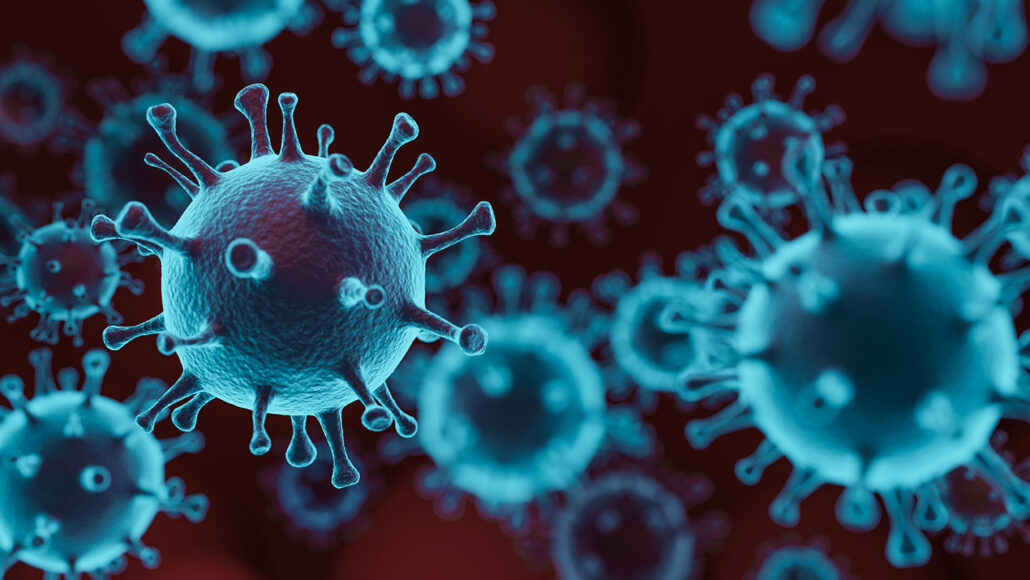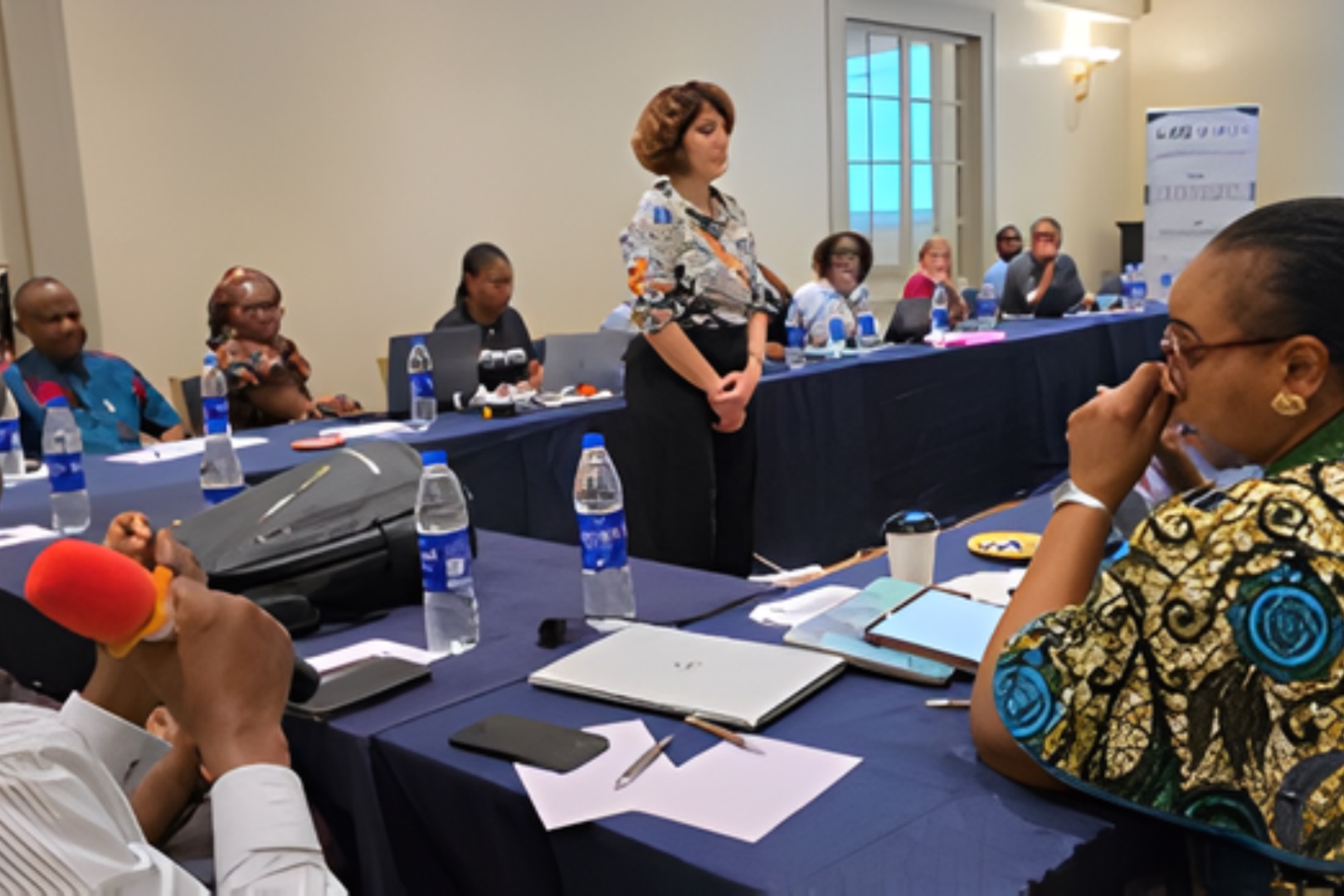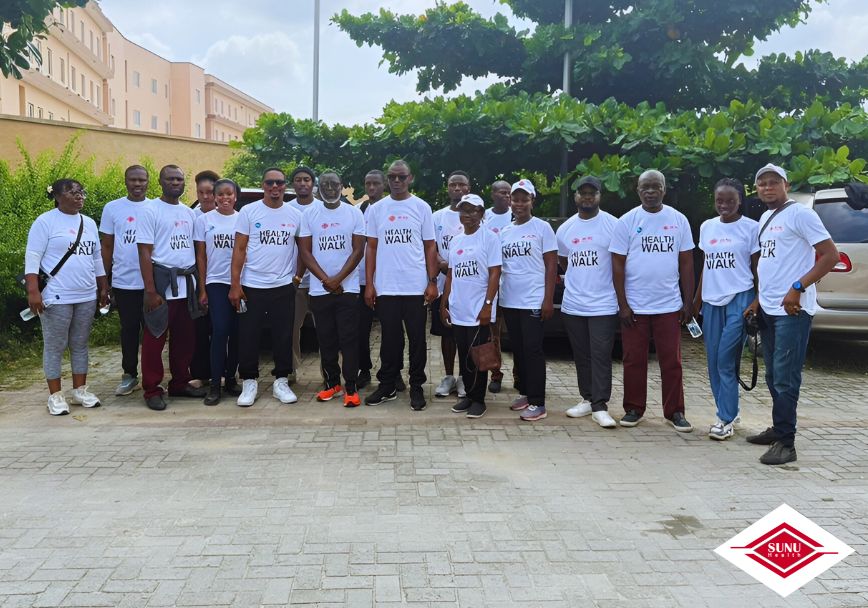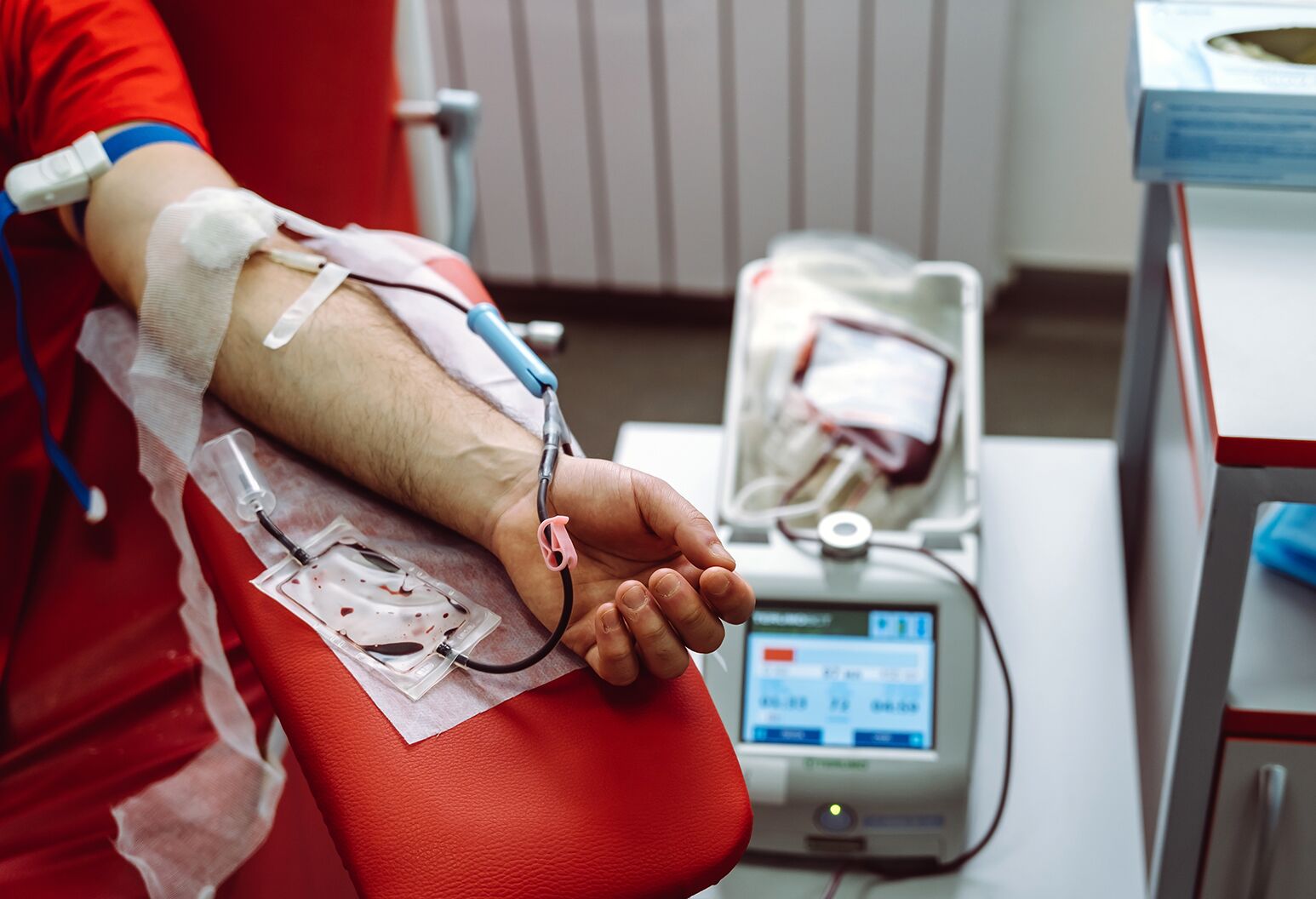Health
COVID-19-Related Deaths Fewer in Africa—WHO

By Adedapo Adesanya
A new World Health Organisation (WHO) pandemic assessment has found out that despite an 83 per cent surge in new COVID-19 cases during the past week in Africa, driven by the Delta and the Omicron variants, fewer deaths have been recorded than in the previous surges.
It, however, warned that more waves could be building as updated forecasts warn that the continent may not reach 70 per cent vaccine coverage until August 2024.
According to the report, Africa recorded more than 196,000 new cases for the week ending December 12, up from around 107,000 in the previous week, bringing the total cumulative number of recorded cases during the pandemic to 8.9 million.
The number of new COVID-19 cases is currently doubling every five days, the shortest reported this year while the speed of the spread is fast, deaths remain low and even dropped by 19 per cent last week compared with the previous week.
There were a little over 3,000 COVID-19-related deaths reported during the first three weeks of the current pandemic wave, which is Africa’s fourth.
WHO explained that about half as many cases were reported in the same time frame during the third wave which was fuelled by the Delta variant.
This upsurge in new cases coupled with low hospitalizations is particularly marked in South Africa which has experienced a 66 per cent rise in new cases during the past seven days compared with the previous seven days.
It noted that hospitalizations have increased by 67 per cent in the past seven days, the bed occupancy rate for Intensive Care Units remains low at 7.5 per cent with 14 per cent of the hospitalized patients receiving supplemental oxygen.
Though the deaths also remain low, WHO warned that the data should be interpreted with caution as the pattern may change in the coming weeks.
“We are cautiously optimistic that deaths and severe illness will remain low in the current wave, but slow vaccine rollout in Africa means both will be much higher than they should be,” said Dr Matshidiso Moeti, WHO Regional Director for Africa.
“We’ve known for quite some time now that new variants like Beta, Delta or Omicron could regularly emerge to spark new outbreaks globally, but vaccine-deprived regions like Africa will be especially vulnerable.”
Vaccination coverage remains highly variable across the region. As of 13 December, only 20 African countries had vaccinated at least 10 per cent of their population—the global target WHO had set for September 2021.
Only six countries have hit the year-end target of fully vaccinating 40 per cent of their population, while only two countries—Mauritius and Seychelles—have reached the 70 per cent coverage seen as essential for controlling the pandemic.
At the current pace, WHO estimates that it will take until May of 2022 before Africa reaches 40 per cent coverage and August 2024 before it reaches the 70 per cent mark.
“In a world where Africa had the doses and support to vaccinate 70 per cent of its population by the end of 2021—a level many wealthy countries have achieved—we probably would be seeing tens of thousands of fewer deaths from COVID-19 next year.
“But we can still save many lives if we can accelerate the pace of vaccination in early 2022,” he added.
WHO data show that 53 African countries have initiated vaccination programmes, which have administered a total of 264 million doses (or 61 per cent of doses received).
Fully vaccinating 70 per cent of Africans requires about 1.6 billion more doses and strengthened efforts to increase vaccine demand.
Dr Moeti added that, “We’re at a pivotal moment in this pandemic where complacency is the enemy. With supplies starting to increase we now must intensify our focus on other barriers to vaccination. They include lack of funding, equipment, healthcare workers and cold chain capacity along with tackling vaccine hesitancy.”
According to the WHO Africa COVID-19 readiness dashboard, of the 34 countries that have submitted complete data, 28 countries (80 per cent) have engaged provinces and districts in preparations for vaccinations; 32 countries (91 per cent) have conducted national training initiatives, and 29 countries (82 per cent) have trained district vaccinators and volunteers.
To increase vaccination coverage, WHO is encouraging countries to move vaccination sites beyond health facilities and main cities and implement community-centred approaches. In an analysis of data collected from 40 countries, six countries confirmed having districts with no vaccination sites.
Meanwhile, Africa’s vaccine challenges are being compounded by Omicron-related travel bans.
Globally, there have been more than 2700 Omicron cases reported in 59 countries, including 11 African countries that account for about 33 per cent of the total cases.
However, Africa’s share is steadily dropping, and South Africa no longer leads the world in Omicron cases. Yet more than 70 countries continue to impose travel bans mainly targeting African countries.
In addition to vaccination coverage, WHO’s 2022 COVID-19 strategy for Africa includes a strong focus on surveillance aimed at increasing case detection, strengthening genomic surveillance to track new variants of concern as well as country capacity for appropriate case management including home-based isolation and care, and guarding against COVID-19 with key preventive measures amidst reduced risk perception.
Health
Nigeria Launches First National Antimicrobial Resistance Survey

By Adedapo Adesanya
Nigeria has launched its first nationally representative survey on antimicrobial resistance to generate critical data to guide evidence-based policies, improve patient outcomes, and strengthen health system resilience.
Antimicrobial resistance occurs when bacteria, viruses, fungi, and parasites evolve to resist treatment, making infections harder to cure.
As a result, surveillance is essential to track resistance patterns, identify priority pathogens, and guide targeted interventions and with support from the World Health Organization (WHO) and other partners, the initiative marks a milestone in the country’s public health response.
Nigeria becomes the third country globally to partner with WHO on a national antimicrobial resistance survey. having been selected based on the country’s strong commitment to AMR surveillance, its updated WHO Nigeria NAP 2.0, and readiness to expand laboratory and data systems.
Africa’s most populous country ranks 20th globally for age-standardized mortality due to antimicrobial resistance . In 2019, an estimated 263,400 deaths in Nigeria were linked to it—more than the combined deaths from enteric infections, tuberculosis, respiratory infections, maternal and neonatal disorders, neglected tropical diseases, malaria, and cardiovascular diseases.
Globally, resistant infections in tertiary care settings cost between $2,371 and $29,289 per patient episode, extend hospital stays by an average of 7.4 days, and increase mortality risk by 84 per cent.
The survey will see the establishment of a national baseline on antimicrobial resistance prevalence to monitor interventions, assess the distribution, burden (morbidity, mortality, DALYs, cost), and diversity of AMR across regions and populations, as well as contribute to the global target of reducing AMR deaths by 10 per cent by 2030, in line with the political declaration endorsed at the 79th United Nations General Assembly in 2024.
It also seeks to strengthen routine antimicrobial resistance surveillance, including diagnostics, sample referral systems, and laboratory capacity.
Using WHO’s standardized methodology, the survey will run for 12–15 months and cover 40–45 randomly selected health facilities nationwide. Patients with suspected bloodstream infections (BSIs) will be identified using standard case definitions, and blood samples will be analysed in quality-assured laboratories.
Data will be collected across all age groups, covering clinical, demographic, laboratory, financial, and outcome indicators. Follow-up will occur at discharge, 28 days, and three months post-infection. The survey will sample approximately 35,000 patients suspected of BSIs to obtain around 800 isolates of the most common pathogens.
Dr Tochi Okwor, Acting Head, Disease Prevention and Health Promotion, Nigeria Centre for Disease Control and Prevention (NCDC) said, “With WHO’s support, we are confident the survey will generate the evidence needed to protect public health.”
WHO Representative in Nigeria, Dr Pavel Ursu, reaffirmed WHO’s commitment stating that ,“Nigeria is taking a decisive step toward combating AMR with an approach grounded in data, science, and measurable impact. This survey will provide the clarity needed to drive smarter policies, stronger surveillance, and better patient outcomes. Nigeria is laying the foundations for a resilient health system, one that protects lives, strengthens trust, and ensures that essential medicines remain effective for future generations.”
Adding her input, Dr Laetitia Gahimbare, Technical Officer at WHO Regional Office for Africa, added:“Strengthening surveillance enhances Nigeria’s capacity to detect and respond to AMR threats, supporting better patient outcomes, reinforcing health security, and building a resilient system.”
Professor Babatunde Ogunbosi, Paediatric Infectious Diseases Specialist at University College Hospital, Ibadan, highlighted the broader impact:, “This survey is about more than data. It’s about building national capacity for research, diagnostics, and policy. It integrates science into public health decision-making.”
Health
Our Vision Extends Beyond Offering Health Insurance Packages—SUNU Health

By Modupe Gbadeyanka
One of the leading Health Maintenance Organisations (HMOs) in Nigeria, SUNU Health, has said its philosophy is proactive wellness, noting that this was why it recently partnered with The Divine Physician and St. Luke Catholic Chaplaincy Centre for a community health initiative.
The chief executive of the company, Dr Patrick Korie, said, “SUNU Health’s vision extends far beyond merely offering health packages and insurance.”
“We are fundamentally interested in proactive wellness—preventing illness rather than just treating it. This annual exercise is a crucial part of that commitment, and we will continue to champion it for as long as we exist,” he stressed.
The medical practitioner led the company’s annual Health Walk in Lagos on Saturday, November 8, 2025. The event drew hundreds of health enthusiasts, including the Chaplain of the centre, Rev Fr. John Okoria SJ.
His active participation reinforced the spiritual and moral commitment to holistic well-being, proving crucial in mobilizing staff and community members, thereby ensuring the vital wellness message reached a broad and deeply engaged audience.
The health walk covered several major streets in Lagos, starting from Ishaga Road and navigating through Itire Road, Randle Avenue, Akerele, Ogunlana Drive, and Workers Street before concluding back at the starting point. Following the vigorous walk, participants engaged in a session of high-energy aerobics and other outdoor exercises, reinforcing the day’s focus on fitness.
“We are delighted to champion this vital health initiative alongside the Catholic Chaplaincy Centre LUTH/CMUL. The turnout was truly delightful, reflecting the community’s deep desire to embrace wellness.
“Collaborations like this amplify our message and commitment to the Nigerian community,” the Brand and Corporate Communications Lead at SUNU Health, Mr Samuel Olayemi, stated.
Health
80 Coronation Registrars Staff Donate Blood in Lagos CSR Initiative

By Adedapo Adesanya
Coronation Registrars Limited, a subsidiary of Coronation Group, in partnership with the Lagos State Blood Transfusion Committee (LSBTC), recently hosted a Blood Drive Initiative at the 5th floor of Coronation Group Plaza. The event saw over 80 staff donate blood to support critical healthcare needs in Lagos State.
The Blood Drive Initiative forms part of Coronation’s commitment to meaningful, human-centred corporate social responsibility, a direct, measurable, and life-saving effort that reflects the Group’s health and sustainability values.
As Prosperity Partners dedicated to creating sustainable wealth for clients and the African continent, Coronation recognises that true prosperity extends beyond financial returns to encompass the well-being of communities we serve.
The company noted that this initiative enabled it to deliver immediate social impact by supporting national blood supply shortfalls through employee-driven action, demonstrate leadership in health-focused CSR aligned with ESG goals and SDG 3 (Good Health & Well-being), strengthen internal culture by fostering employee engagement, empathy, and purpose in a safe, structured environment, and reinforce corporate reputation through public-facing acts of service, stakeholder trust, and media visibility.
Blood donation remains a critical need in Nigeria, where regular blood supply is essential for emergency care, surgeries, and treatment of various medical conditions. Each donation can save up to three lives, and the collective effort of Coronation employees will significantly impact patients in need across Lagos State healthcare facilities.
“This aligns seamlessly with Coronation’s broader sustainability agenda, which views healthcare access as fundamental to building prosperous communities across Africa,” the company said in a statement on Tuesday.
Partnering with a certified medical institution, the drive was professionally managed, medically compliant, and logistically efficient. Participants underwent necessary medical screening procedures to ensure donor fitness and safety. Following their donations, donors received refreshments and appreciation for their life-saving contribution.
“At Coronation, we believe in making a meaningful difference in the communities we serve,” said Mr Oluseyi Owoturo, Chief Executive Officer of Coronation Registrars Limited. “This Blood donation Initiative reflects our values in action, saving lives, building community, and positioning the company as a purpose-driven brand. We’re proud of our employees who stepped forward to donate blood and save lives. This is what sustainable impact looks like: tangible solutions that address real challenges facing our continent.”
The partnership with the Lagos State Blood Transfusion Committee ensured professional handling of the donation process, meeting all safety and quality standards for blood collection and storage.
Coronation Registrars Limited says it continues to demonstrate that corporate success goes hand-in-hand with social responsibility.
“This initiative reinforces the company’s purpose to create a prosperous future for clients and the African continent through transformational solutions,” it added.
-

 Feature/OPED6 years ago
Feature/OPED6 years agoDavos was Different this year
-
Travel/Tourism9 years ago
Lagos Seals Western Lodge Hotel In Ikorodu
-

 Showbiz3 years ago
Showbiz3 years agoEstranged Lover Releases Videos of Empress Njamah Bathing
-

 Banking7 years ago
Banking7 years agoSort Codes of GTBank Branches in Nigeria
-

 Economy3 years ago
Economy3 years agoSubsidy Removal: CNG at N130 Per Litre Cheaper Than Petrol—IPMAN
-

 Banking3 years ago
Banking3 years agoFirst Bank Announces Planned Downtime
-

 Banking3 years ago
Banking3 years agoSort Codes of UBA Branches in Nigeria
-

 Sports3 years ago
Sports3 years agoHighest Paid Nigerian Footballer – How Much Do Nigerian Footballers Earn










